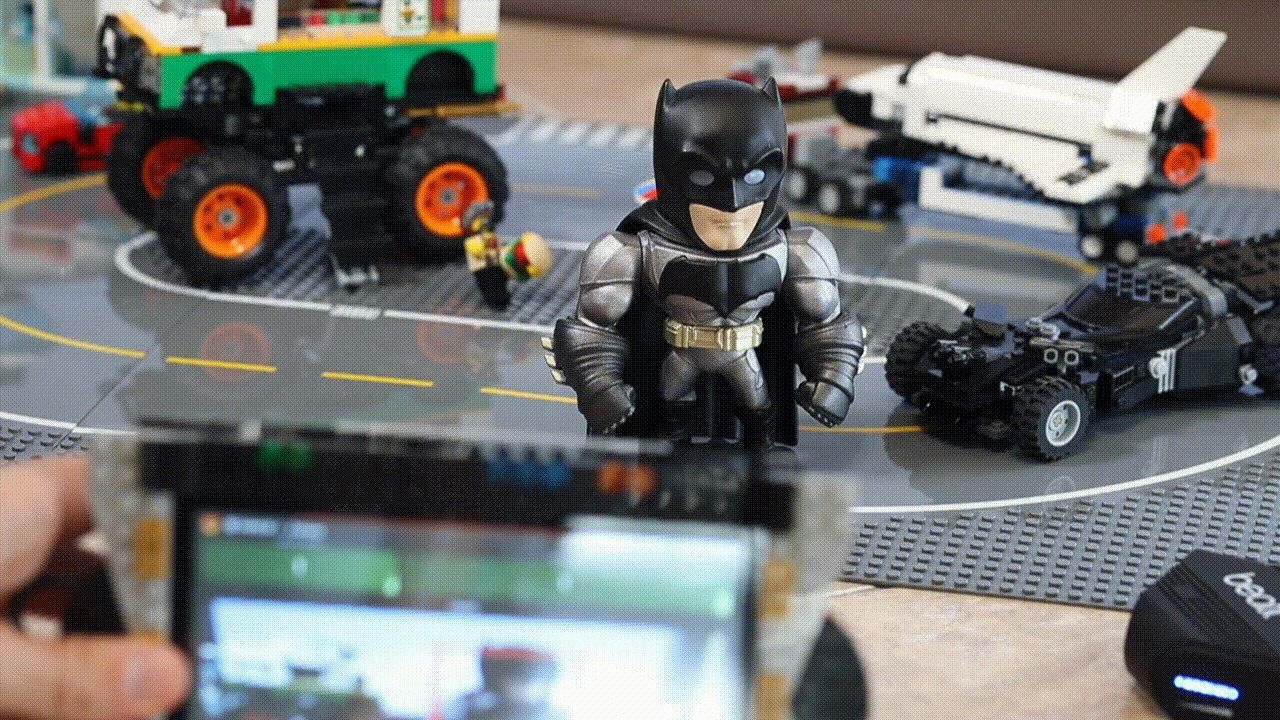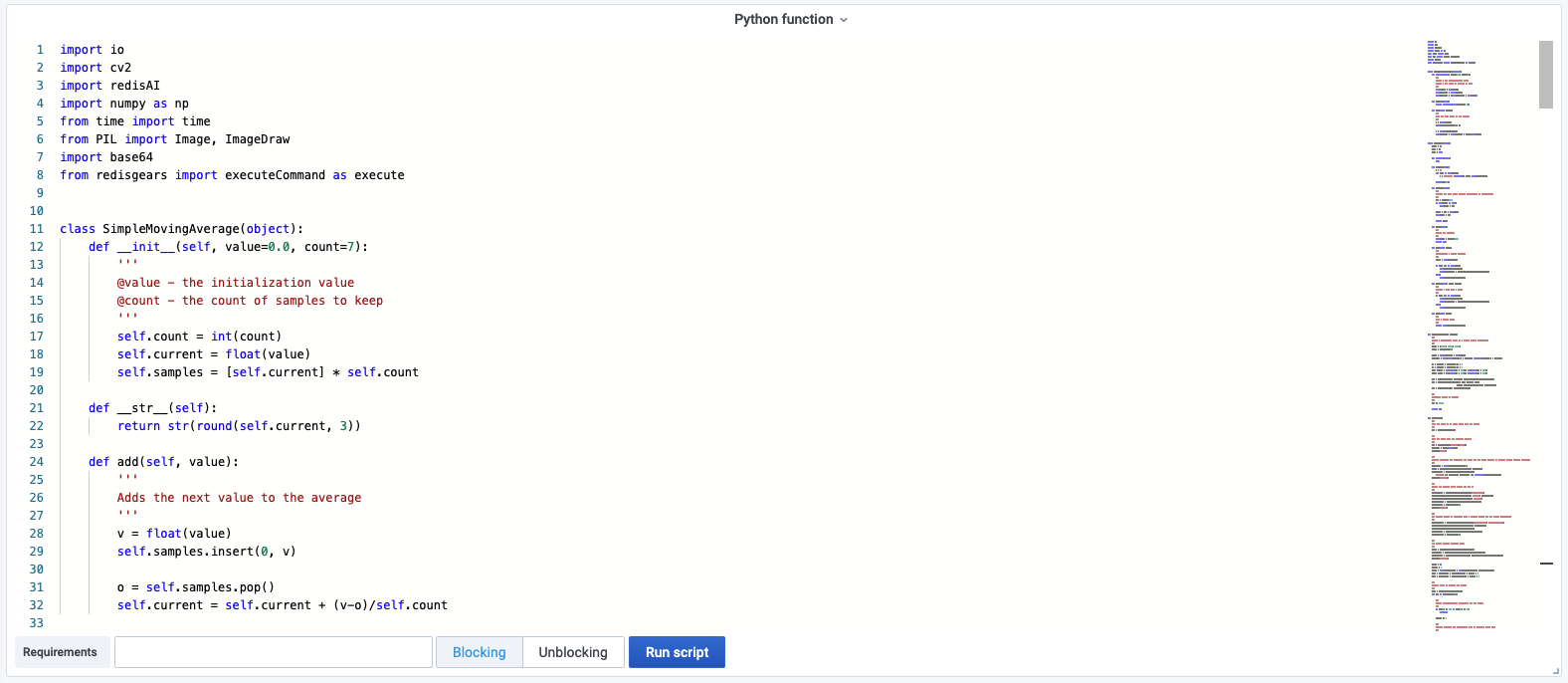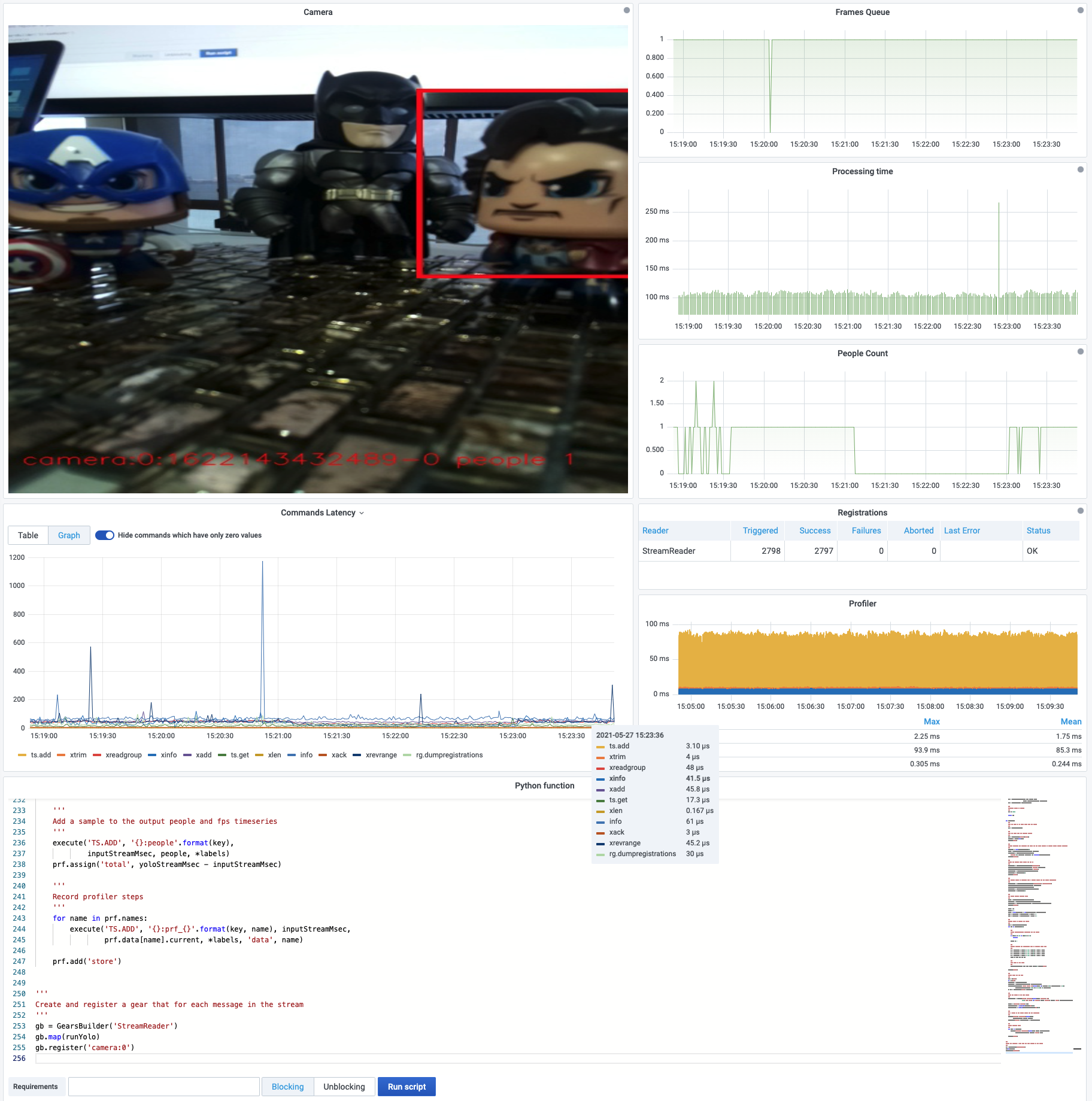This project demonstrates how to analyze camera feed stored as Redis Streams using serverless engine RedisGears, RedisAI and display analyzed frames with metrics in Grafana.
Demo is available on demo.volkovlabs.io:
This project provides Docker image with Redis, RedisTimeSeries, RedisGears, RedisAI and installed OpenCV for Python library.
docker run -p 6379:6379 --name=redis-opencv ghcr.io/redisgrafana/redis-opencv:latestCheck that OpenCV with dependencies downloaded, installed and registered in the RedisGears requirements:
cluster.remote:6379> rg.pydumpreqs 1) 1) "GearReqVersion" 2) (integer) 1 3) "Name" 4) "Pillow" 5) "IsDownloaded" 6) "yes" 7) "IsInstalled" 8) "yes" 9) "CompiledOs" 10) "linux-buster-x64" 11) "Wheels" 12) 1) "Pillow-8.2.0-cp37-cp37m-manylinux1_x86_64.whl" 2) 1) "GearReqVersion" 2) (integer) 1 3) "Name" 4) "opencv-python" 5) "IsDownloaded" 6) "yes" 7) "IsInstalled" 8) "yes" 9) "CompiledOs" 10) "linux-buster-x64" 11) "Wheels" 12) 1) "numpy-1.20.3-cp37-cp37m-manylinux_2_12_x86_64.manylinux2010_x86_64.whl" 2) "opencv_python-4.5.2.52-cp37-cp37m-manylinux2014_x86_64.whl" 3) 1) "GearReqVersion" 2) (integer) 1 3) "Name" 4) "numpy" 5) "IsDownloaded" 6) "yes" 7) "IsInstalled" 8) "yes" 9) "CompiledOs" 10) "linux-buster-x64" 11) "Wheels" 12) 1) "numpy-1.20.3-cp37-cp37m-manylinux_2_12_x86_64.manylinux2010_x86_64.whl"To load AI model and PyTorch script to the Redis database run:
cd ai/ cat tiny-yolo-voc.pb | redis-cli -h redis -x AI.MODELSTORE yolo:model TF CPU INPUTS 1 input OUTPUTS 1 output BLOB cat ai-yolo-script.py| redis-cli -h redis -x AI.SCRIPTSET yolo:script CPU SOURCEGrafana can be started using Docker Compose or installed locally with Redis plug-ins for Grafana and Volkov Labs Image panel.
docker-compose pull docker-compose upWhen starting using Docker Compose, dashboard and plug-ins will be auto-provisioned and available in Grafana.
Select Camera Processing dashboard and copy-paste gears-yolo.py script to RedisGears Script editor panel.
Click on the Run script button and you should see registered script StreamReader in the Registrations panel.
Copy script edge-camera.py and requirements.txt to IoT or any device with camera. Run script by specifying Redis URL, number of frames per second and rotate camera if required.
cd camera/ pip3 install -r requirements.txt python3 edge-camera.py -u redis://redis:6379 --fps 6 --rotate-90-clockwise trueYou should see output with Stream's Id and size of the jpeg file.
# python3 camera.py -u redis://red:6379 --fps 6 --rotate-90-clockwise true Connected to Redis: ParseResult(scheme='redis', netloc='redis:6379', path='', params='', query='', fragment='') id: b'1622145939609-0', size: 5479 id: b'1622145939769-0', size: 10006 id: b'1622145939928-0', size: 6709 id: b'1622145940100-0', size: 6037 id: b'1622145940266-0', size: 6468 id: b'1622145940435-0', size: 11607 id: b'1622145940597-0', size: 5577 id: b'1622145940768-0', size: 6041 id: b'1622145940926-0', size: 5570 id: b'1622145941098-0', size: 5916- Redis plug-ins for Grafana Documentation
- My Other Stack Is RedisEdge
- RedisEdge Real-time Video Analytics
- Fork the repository.
- Find an issue to work on and submit a pull request.
- Could not find an issue? Look for documentation, bugs, typos, and missing features.
- Apache License Version 2.0, see LICENSE.






